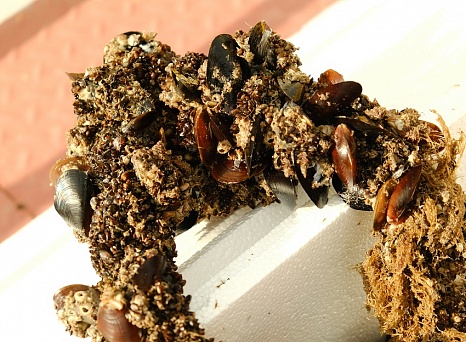Area of Aquatic Organisms in the Black Sea


General Director: Zlenko Aleksander Vladimirovich
Chernomortransneft JSC is a subsidiary of Transneft PJSC. The company has been setting standards for high industrial reliability and environmental safety for more than half a century ensuring the transportation of a significant part of Russian oil.
For almost half a century of the enterprise’s operation, there has not been a single year without commissioning new facilities, as well as improving and modernizing them. Chernomortransneft JSC implements a comprehensive program for technical re-equipment, reconstruction, total overhaul, and diagnostics of oil-trunk pipelines.
Any event at Chernomortransneft JSC is assessed in terms of the Company’s impact on the environment. The general principles of its environmental activities are determined by Transneft’s Environmental Policy. Subdivisions of Transneft PJSC are among the first in the country to be certified for compliance of the Environmental Management Systems with the requirements of ISO 14001.
Area of Aquatic Organisms in the Black Sea
Chernomortransneft JSC constructed a special area of aquatic organisms to monitor the state of the aquatic environment of the Black Sea.
The site of biological test objects was placed within the boundaries of the seaport of Novorossiysk, at berth No. 1. The divers attached two hydro-biotechnical structures to the berth supports.
300 giant bivalve oysters were placed in special cages at a depth of 6-9 m. Collectors for settling mussels were also installed; in total, nine hundred mussels were planted on the structure. A special net is stretched on the tent parts of the stand for growing green algae (Ulva rigida) and brown algae (Cystoseira barbata). The planting material was selected from the mariculture farms at the Сapes Bolshoi and Maly Utrish in the Anapa District.
Oysters and mussels accumulate pollutants from the water in their tissues being inherently sensitive bioindicators. The analysis of samples of aquatic organisms will make it possible to accurately assess the effectiveness of environmental protection measures implemented in the port including wastewater treatment at the Sheskharis Transshipment Complex. Every six months, aquaculture facilities will be examined for the content of petroleum products in their tissues.
The site of test objects meets the environmental requirements established by technical regulations and legislation in the field of environmental protection.
This is the third project of this kind implemented by PJSC Transneft in seaports. For the first time, biological test objects for monitoring seawater were introduced in the port of Kozmino (the Primorskiy Region), and then in the port of Primorsk (the Leningradskaya Region). Bioindication methods were successfully tested and made it possible to monitor the environment state by analyzing aquatic organisms. The practice showed the effectiveness of this method in assessing and controlling possible industrial pollution, and similarly, it was introduced in the port of Novorossiysk.
JSC Chernomortransneft pays great attention to environmental protection and compliance with the requirements of environmental legislation. Quarterly, the environmental-analytical laboratory of the Sheskharis Transshipment Complex carries out a planned environmental analytical monitoring of seawater in the area of deep-water outlets of industrial and rainwater and domestic wastewater treatment facilities. In particular, the possibility of containing petroleum products, iron ions, nitrates, nitrites, phosphates, ammonium nitrogen is checked.
The results of the conducted research show that no excess of the established standards was identified, a high level of environmental safety of the Sheskharis Transshipment Complex’s infrastructure is ensured.
Treatment facilities for industrial and rainwater wastewater at the Sheskharis Transshipment Complex are the largest oily wastewater treatment facilities on the Black Sea coast of Russia; they purify wastewater to the standards established for fishery water bodies (with a capacity of 700 m3/h) and domestic wastewater (with a capacity of 29 m3/h).




